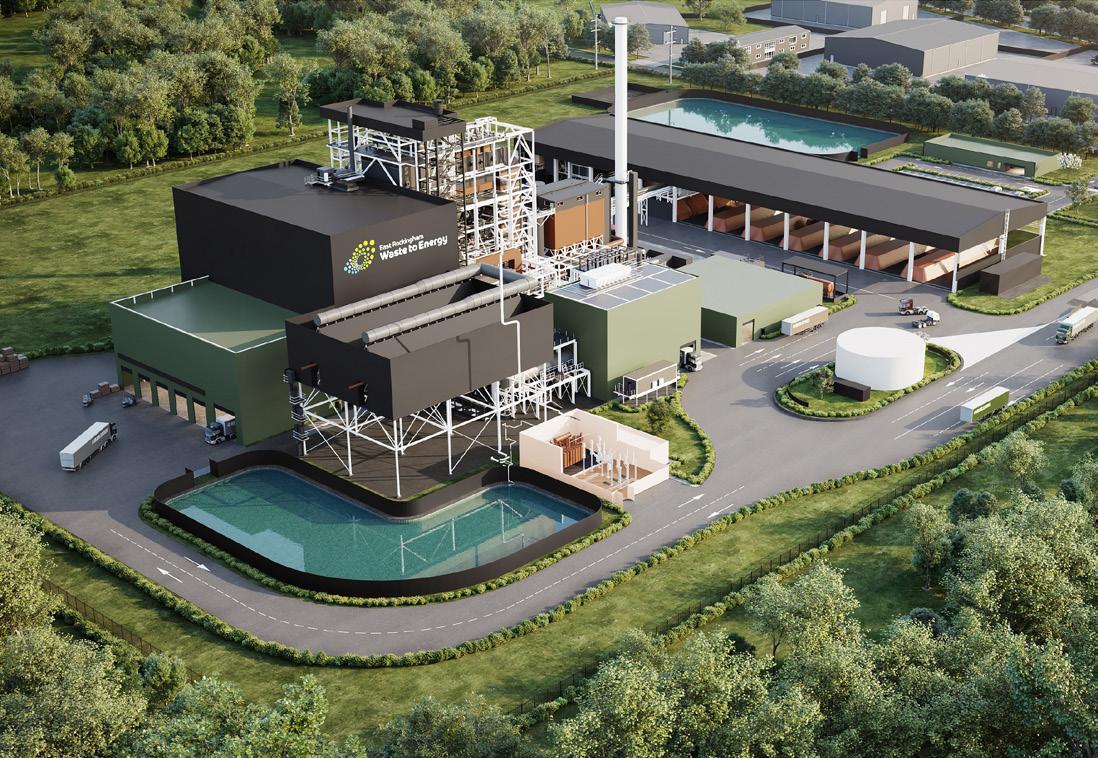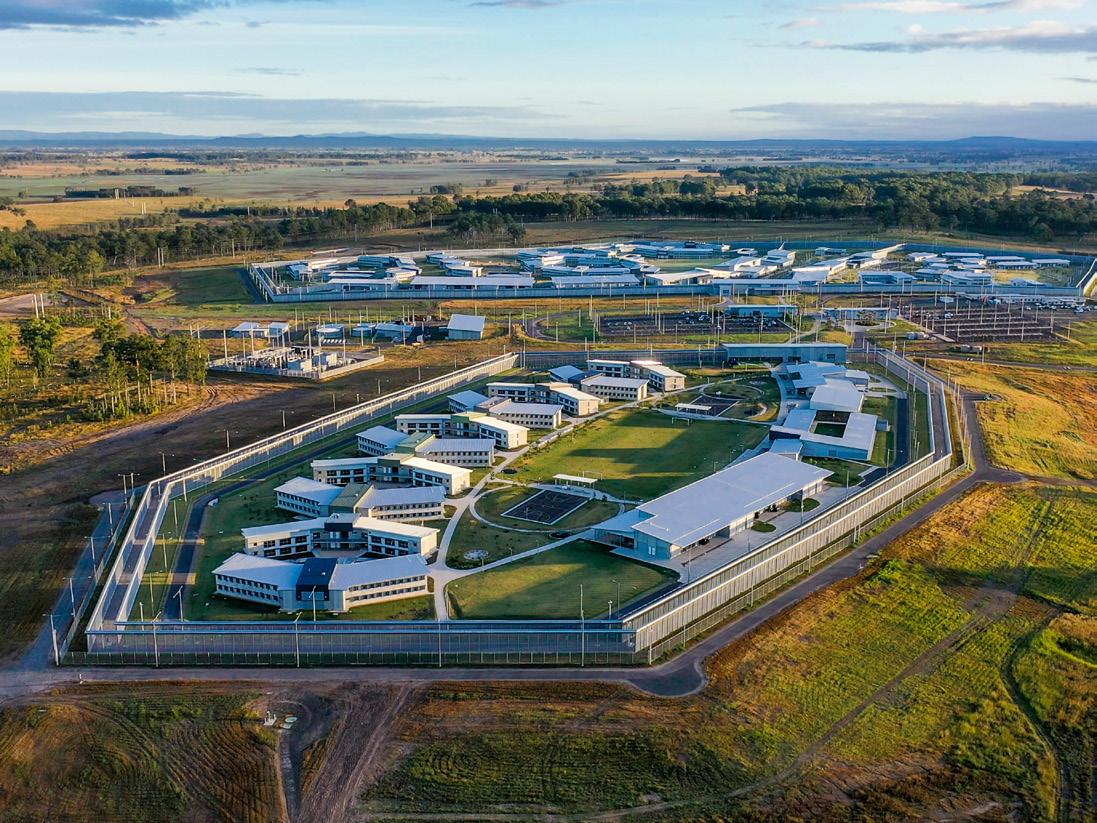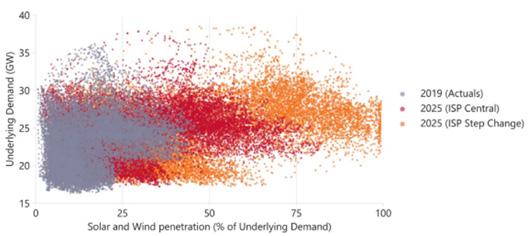
7 minute read
WHAT’S NEXT FOR PRIVATE FINANCING OF GREENFIELD INFRASTRUCTURE
Justin Bailey | Regional Managing Director (APAC), John Laing Andy Haining | Investment Director, John Laing
Until recently, a $1 billion greenfield infrastructure project was considered a “mega-deal”. Now $1 billion is seen as a “modest” sized project, with many early works or secondary packages associated with major projects being much larger than that. Construction cost escalation can explain some of the change, with annual cost increases running well ahead of CPI, but another reason is the number of once in a generation transport projects which the States and Territories are procuring.
Over the last 30 to 40 years, private finance procurement models including Public Private Partnerships, Design, Build, Finance and Operate, and Build, Operate, Own and Transfer and other related forms have been applied in the delivery of a range of infrastructure asset classes. This includes social infrastructure such as schools, hospitals, prisons and stadiums, through to water and utilities, and many road and rail projects. However, the trend in recent years has been to use private financing models almost exclusively for the larger and more complex transport projects.
This has left a market where only the Tier 1 contractors are able to participate in many projects, and the models are only applied to projects that come with the highest risks in delivery. Whilst we see a continued role for private finance in the delivery of large transport projects, it is clear that there are benefits to an application of private finance to a broader set of projects.
Privately financed procurement is not for all situations, but where applied in the right context, they can be an important procurement model and ultimately benefit all parties involved:
for governments, they can provide optimal whole of life outcomes, better risk adjusted cost, a high level of design innovation and importantly, in many cases, allow governments to focus on the services they provide and not the assets that enable such services;
for contractors, given the additional contracting certainty and security required to support private finance, they can contribute a higher construction margin into an overall order book comprising a number of different procurement models; and for communities, private finance can allow development of economic infrastructure without placing a burden on government.
With the right policy settings, private financing models can be applied across a wide range of sectors. This can accelerate the delivery of new infrastructure, creating work for the construction industry and local jobs.
SOCIAL INFRASTRUCTURE
Industry has been waiting to see more privately financed social infrastructure projects come to market following a relative hiatus in procurements over the past four or five years. The exceptions to this are the current procurement for Footscray Hospital in Victoria and the recent South Australian Schools project, both of which were very well received by the market and have seen a broad range of contractors participating.
So why are governments instead sticking to traditional procurement despite the success record of delivery in education, healthcare and corrections? Some believe that privately financed transactions “take too long to procure” due to the upfront planning work undertaken prior to procurement and the length of the procurement process. However pipeline certainty and early selection of private finance as the procurement model can reduce procurement time frames, as can streamlining bid requirements and further standardisation of commercial documentation.
Social infrastructure remains very important from an industry perspective. Such projects are of a scale that allow smaller contractors to participate directly. They also typically represent a risk profile that is more manageable being predominantly single site, with less third party interfaces and shorter timeframes.
The outcomes for users of social infrastructure delivered as privately financed projects is helpful demonstrating the success of this form of procurement model. Infrastructure Partnerships Australia’s research paper Measuring The Value and Service Outcomes of Social Infrastructure PPPs in Australia and New Zealand reported that:
“Service providers (95 per cent) stated that their PPP project has delivered on the service promised by the relevant state government and delivery agency”; and
“Service providers (95 per cent) and all contract managers participating in the research prefer working in a PPP facility and service contract over a traditional government-owned and operated facility”.
CIRCULAR ECONOMY
Australia is seeing other developed nations accelerate towards a circular economy. This often includes modern waste to energy facilities to divert residual waste from landfill. As a sign of what is possible, two thermal waste to energy plants are under construction in Perth, Western Australia. This will materially reduce municipal and commercial waste from the Perth market going to landfill where this is currently no alternative.
Private financing principles apply very well to this sector. The transactions are capital intensive, complex and require multiple commercial arrangements to underpin their commercial viability. The projects require developers with the appropriate skills to understand, evaluate and structure around key risks and secure revenue arrangements in order to ensure projects are financeable. Whilst the market is nascent, international experience is already in Australia and there is strong appetite to invest in the waste sector. Clarity around policy settings from state and territory governments and a co-ordinated approach to market by the major council groups can accelerate investment in the sector.

DECARBONISATION OF TRANSPORT
Governments globally are looking at how they can achieve their stated emissions reduction targets. The decarbonisation of the transport sector is seen as an important contributor to these efforts, with the added benefit of improving air quality in our major cities. Public transport fleets should be a near term focus for governments, given the difficult decision to continue to buy diesel buses which could still be in service in 25 years.
What is becoming clear is that diesel buses cannot simply be replaced with electric or hydrogen powered ones as they reach the end of their lives. Instead, a whole of system approach is required across the depots, charging infrastructure, grid, batteries and the sourcing of renewable power or hydrogen.
As an integrated system, there is an opportunity to align the investment in new buses with the long-term depot, charging grid and network infrastructure. As with a number of recent privately financed rollingstock projects such as New Generation Rollingstock, the electric buses and associated infrastructure can be owned and managed by long-term investors who are incentivised to meet strong availability and KPI regimes. Such structures will help ensure that governments retain flexibility to tender out operating contracts from time to time on the best possible terms for government. Localisation of bus manufacture also provides an opportunity for local job creation.
SOCIAL AND AFFORDABLE HOUSING
Demand for social and affordable housing across Australia continues to exceed supply. COVID-19 is likely to put more pressure on governments to provide housing to meet increasing community needs. Despite many models being applied to increase investment in the sector by institutional capital, it is not clear that a consistent and scalable model has been accepted as the best way forward.
At the forefront of this issue is that social housing, and in many cases affordable housing, is simply not economic to build. It means that the rental income derived from the housing created cannot derive sufficient returns to attract investment. The government has a number of levers to address the economic imbalance. For example, grants, tax concessions and concessional funding can assist. So can allowing private Build to Rent as part of the development, as it can provide some level of cross subsidy. Where that is not sufficient, the government can provide a level of direct subsidy in these transactions.
The other lever government has is land. We know sale of land is potentially a difficult political decision. Government can
FOR MORE INFORMATION PLEASE CONTACT
Justin Bailey
Regional Managing Director, John Laing E: justin.bailey@laing.com

however facilitate development of new social and affordable housing where it provides state land but retains the long term interest in the land. With a level of subsidy, tied to appropriate KPIs, a 30 to 50 year concession can provide an opportunity for institutional capital to develop new housing and generate sufficient return. Following this, the land and housing can be transferred back to the State. What investors look for is a level of revenue certainty, which the subsidy can provide alongside rental income from tenants.
Institutional capital can play a role in the social and affordable housing market if the model is right and projects are feasible. A scalable model that includes a level of subsidy over a concession period can help unlock significant investment in the sector.
As the Australian economy looks to rebuild post COVID-19, greenfield infrastructure will provide governments with a very important avenue for job creation and economic stimulus. Given its benefits to all parties, private finance can continue an important role to play in this recovery.










